Diriyah CEO sets the record straight
17 February 2025

Register for MEED’s 14-day trial access | Beat the queue for the Saudi Gigaprojects 2025 summit (12-14 May)
There can be few busier people in Saudi construction right now than Jerry Inzerillo, group CEO of Diriyah Company, the developer behind the $63.2bn Diriyah gigaproject.
A charismatic New Yorker with the distinctive accent to match, he has been the most visible persona behind what is arguably one of the most impressive and advanced projects of the kingdom’s $1tn capital expenditure drive.
Centred around the At-Turaif Unesco World Heritage Site on the western outskirts of Riyadh, Diriyah has opened its first assets to the public, most notably the retail-focused Bujairi Terrace and its first hotel, the Luxury Collection Bab Samhan Hotel.
These are already proving popular; even on a weekday lunchtime, the former was packed with Saudis enjoying a meal or simply walking between the rows of upscale boutiques enveloped in Diriyah’s characteristic Najdi architectural style.
At night, Bujairi Terrace is so busy that advanced tickets are required just to enter the precinct to avoid overcrowding.

Opened in December 2022, Diriyah's Bujairi Terrace offers an array of restaurants and cafes
Asset manager role
Managing this is a new challenge for Diriyah Company as it transitions from a developer primarily focused on infrastructure delivery to one that is now also operating as an asset manager for its completed elements.
“Think about it: right now in the day, we have 40,000 construction workers on site, but last night, we had 13,000 people visiting At-Turaif,” Inzerillo said in early January.
“We’re trading; we’re open; we’re earning revenues from Bab Samhan, the first of 40 hotels to open. It’s already trading very, very well – it’s going to be a very popular hotel.
“I’ve been here 6.5 years now and I’m more optimistic than I’ve ever been.”
Visitors are not just there to shop and eat. Diriyah’s protocol department now has more than 20 staff to handle between nine and 15 protocol moments a day.
“Heads of state, cabinet members and prominent CEOs come every day to see His Royal Highness [Crown Prince Mohammed Bin Salman]. They view the masterplans, see it being built and then have a meal before going to the Unesco site,” says Inzerillo.
I’m seeing robust interest and activity now, not just kicking the tyres as we say in New York. I’m seeing people really coming up to us now. We have dozens of deals right now. We’re very far down the road in terms of equity
Jerry Inzerillo, group CEO of Diriyah Company
Concrete proof of delivery
The Diriyah CEO spoke with MEED at the opening of two new $200m substations built by Saudi Electricity Company to serve the gigaproject specifically. His presence at the event was a reminder of how keen Diriyah Company is to tell the world – and potential investors – about the development’s progress.
It is no secret that the gigaprojects programme has failed to attract the amount of local or foreign sector investment that it may have initially expected. Opinions vary, but it is fair to say a lack of clarity on project scopes, timeframes and visions, combined with the Covid pandemic and missteps in the initial communication strategy on what the gigaprojects stood for, have all been stumbling blocks in drawing in private investment.
However, this is changing as the gigaprojects themselves start to be delivered and more concrete proof of their demand potential is made clear.
Not that Inzerillo has any doubts about their ultimate investment potential and successful delivery. When asked about these issues, his response was clear: “Look I think there are two factors [behind these issues] and I don’t see them as unhealthy. In fact, it’s the opposite – I see them as healthy,” he asserts.
“Our [Saudi Arabia’s] intention was to take tourism from 3% of GDP to 10% by 2030, while our target was to attract 100 million visits by the same date. We achieved this by December 2023. We’ve already broken 5% of GDP and we feel very confident that we’ll make the 10% objective.
“We’re now putting the infrastructure in the new 58 million square-metre King Salman International airport and other transport infrastructure around the country. All the gigaprojects are opening hotels; for example, look at the great work being done along the Red Sea coast; the great work being done now on Qiddiya.
“So, I think what happened was a lot of people said, ‘Ok, we believe in Saudi Arabia. We certainly believe in its vision. But you know what? We’re going to wait a year or two till we see evidence that the projects are progressing as projected. We intend to be in the kingdom a long time, so let’s wait a year or two before committing.’”
JOIN THE LEADERS BUILDING VISION 2030 AT THE 3RD EDITION OF MEED's SAUDI GIGAPROJECTS SUMMIT
12-14 May – Riyadh, Saudi Arabia
CLICK HERE TO REGISTER YOUR INTEREST
Optimistic outlook
Inzerillo highlights Covid’s impact on the investment environment, adding that it delayed investment plans by two years, but appetite has now caught up.
“I’m seeing robust interest and activity now, not just kicking the tyres as we say in New York,” he states. “I’m seeing people really coming up to us now. We have dozens of deals right now. We’re very far down the road in terms of equity.
“I’m feeling very, very optimistic. I mean, you would think the CEO would naturally be optimistic, but I’m seeing a lot of evidence now.”
This bullishness is underpinned by three huge contracts awarded last year, totalling more than $5.6bn to build the North Cultural and Qurain Avenue districts, forming core components of the Diriyah Gate (DG) 1 phase of the gigaproject, as well as hotel and leisure assets on its residential and hospitality-focused Wadi Safar district.
The pace of activity is continuing into 2025 with a number of major contracts under tender or bid evaluation on the DG2 second phase, including three interchanges on King Khalid Road, the King Salman Grand Mosque, Royal Diriyah Opera House, infrastructure development works, the Northern Community and Diriyah Arena assets.
Just as significant was the award in early January of a $114m contract covering architectural construction and design services for DG2’s Boulevard District. One of the centrepieces of this second phase, the boulevard will be almost two kilometres long and will be lined on both sides by luxury boutiques and restaurants. Construction work on the boulevard should start in 2026.

One of the largest palaces in Diriyah, Salwa Palace extends over an area of 10,000 square metres
On time, on budget
Maintaining this pace of procurement is important given some of the – often negative – headlines following the ‘pause’ in gigaproject spending in the first half of 2024 as the government and the gigaproject companies’ owner, the Public Investment Fund (PIF), assessed their priorities and expenditure allocations in the face of soaring costs and timelines that threatened to be missed.
While much of this attention has been on Neom, particularly its The Line component, other gigaprojects such as The Red Sea, Roshn and Qiddiya threaten to be put into the same basket, an argument Inzerillo is keen to set straight.
“Now, one has to deal with real economic facts, and that is that post-Covid, you had major supply chain issues, which caused this hyperinflation. We’ve taken that into consideration and made adjustments. We’re on time, we’re on budget,” he stresses.
“We’ve been very fortunate because of our track record. We have a rockstar team. None of our funding has been even touched in the slightest by the PIF.”
Diriyah has had success in mitigating soaring materials and contracting costs primarily by bundling different works packages into the three ‘mega’ contracts awarded in 2024 as a means of consolidating work to just a handful of contractors.
At the same time, it secured long-term supply agreements from local manufacturers for key materials such as windows, doors and concrete. Scope revisions, such as the incorporation of the originally planned DG3 residential district into the DG1 element, have also contributed to putting a lid on cost pressures.
“We always said we had five gigaprojects,” explains Inzerillo. “We had the DG1 historical district. We had DG2, which is 500 tech companies, 100 media companies and 50 entertainment companies. And then there was talk about DG3. When we revisited DG3, it really was just an extension of DG1. So now what we’ve done is [merged] what was called DG3 into DG1. In other words, we merged two phases into one family, but the investment remains the same.”
Reprioritisation of resources
As for last year’s re-evaluation of the gigaprojects’ priorities and delays to the programme overall, Inzerillo attributes these to unforeseen events.
“Now, here’s the other point about the reprioritisation,” he says, referring to last year’s slowdown in gigaproject activity. “Three years ago, no one had any definitive evidence that Saudi Arabia would win the 2027 Asian football games. Three years ago, no one knew that we would be able to win the Winter Asian Games. Three years ago, no one knew we would win the 2030 World Expo in Riyadh. And three years ago, no one predicted the Kingdom of Saudi Arabia would win the 2034 World Cup.
“So, what would need to happen to do those four global events? The answer is, of course, it requires a reprioritisation of resources because now there’s a giant emphasis on delivering these events, especially in Riyadh …. It’s a natural recalibration to host these global events to diversify the economy and certainly hyper stimulate tourism.”

The PIF is expected to provide another SR12bn this year for further development at the gigaproject
Investor interest
Inzerillo, who started his varied, five-decade career in the kitchens of a Brooklyn catering company and then onto senior hotel management positions in the US and South Africa before heading up both IMG Artists and the Forbes Travel Guide, is equally forthright about Diriyah’s investment potential and the success it has had to date, even if much of it has yet to be formally announced.
“We have a very big interest from investors now,” he says. “I’m seeing my investment division getting really busy, which is very encouraging. I think that when we get to this time next year, we’re going to see a big repetition of what I call replacement equity.
“On some of the commercial assets right now, we’re getting great interest from foreign equity. We’ve had several cases now where foreign partners, such as Saudi, GCC and international partners, have seen the project out of the ground. They can really see it right in front of them.
“We have a major development with a retail developer from Italy and one from Colombia on buying hotels and going into residential sales with us as joint-venture partners. Funding has been front-loaded from the PIF, which is why it’s important to be a gigaproject within the PIF family. What’s also important is that it allows us to keep up the pace and, more importantly, maintain our quality.”
To date, the PIF has funded all of the infrastructure works on the gigaproject and is expected to provide another SR12bn this year for further development.
But at some point, Diriyah Company and the other PIF project subsidiaries are expected to obtain financing, particularly once they start earning revenues. Neom and Red Sea Global have already successfully raised funds through a combination of bond issuances and corporate loan agreements, and Diriyah itself is likely to go down the same route.
Likewise, it is expected to eventually go public when the time is right.
“When will that happen,” says Inzerillo. “That will obviously depend on PIF’s input, which is very important, but we’ve already started the process of getting ready for an initial public offering at some point. I’d be very happy to see that happen before 2030 as I think it would be a great accomplishment. And I’m optimistic to that effect.”
With its first assets up and running and a record value of contracts awarded in 2024, Diriyah is developing at a rapid pace and its CEO is clearly confident it will have most of its core components ready by the launch of the World Expo 2030.
Much still needs to be done, however. Line 2 of the Riyadh metro will be extended into the development, where it will interchange with the planned Line 7, linking the new King Salman International airport with Qiddiya via Diriyah. The Q Express, a planned express train linking the airport with the entertainment gigaproject, will also stop at Diriyah. All three projects will be handled by other clients and, therefore, somewhat out of Diriyah Company’s direct control.
Likewise, it remains unclear what the full impact of Expo 2030 and the 2034 World Cup will be on the project ecosystem in the capital. Combined with the giant New Murabba development and ongoing works on the King Salman Park and Sports Boulevard megaprojects, the market is not likely to settle any time soon.
And despite all the positive talk, there are still very few concrete announced investments in the gigaprojects. Yet, with its first areas already opened and other key elements well under way, Diriyah is arguably better placed than most to capitalise on this unprecedented investment opportunity.
Exclusive from Meed
-
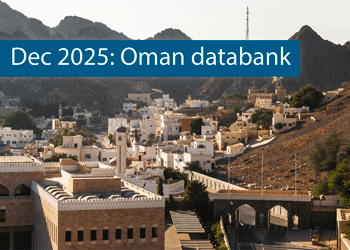 Oman’s growth forecast points upwards
Oman’s growth forecast points upwards24 December 2025
-
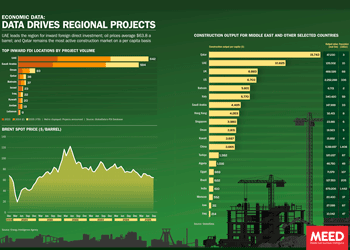 December 2025: Data drives regional projects
December 2025: Data drives regional projects23 December 2025
-
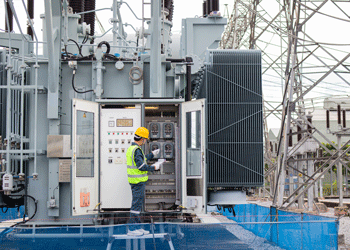 Local firm bids lowest for Kuwait substation deal
Local firm bids lowest for Kuwait substation deal22 December 2025
-
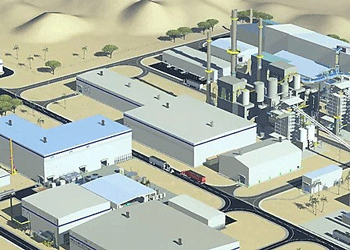 Saudi-Dutch JV awards ‘supercentre’ metals reclamation project
Saudi-Dutch JV awards ‘supercentre’ metals reclamation project22 December 2025
-
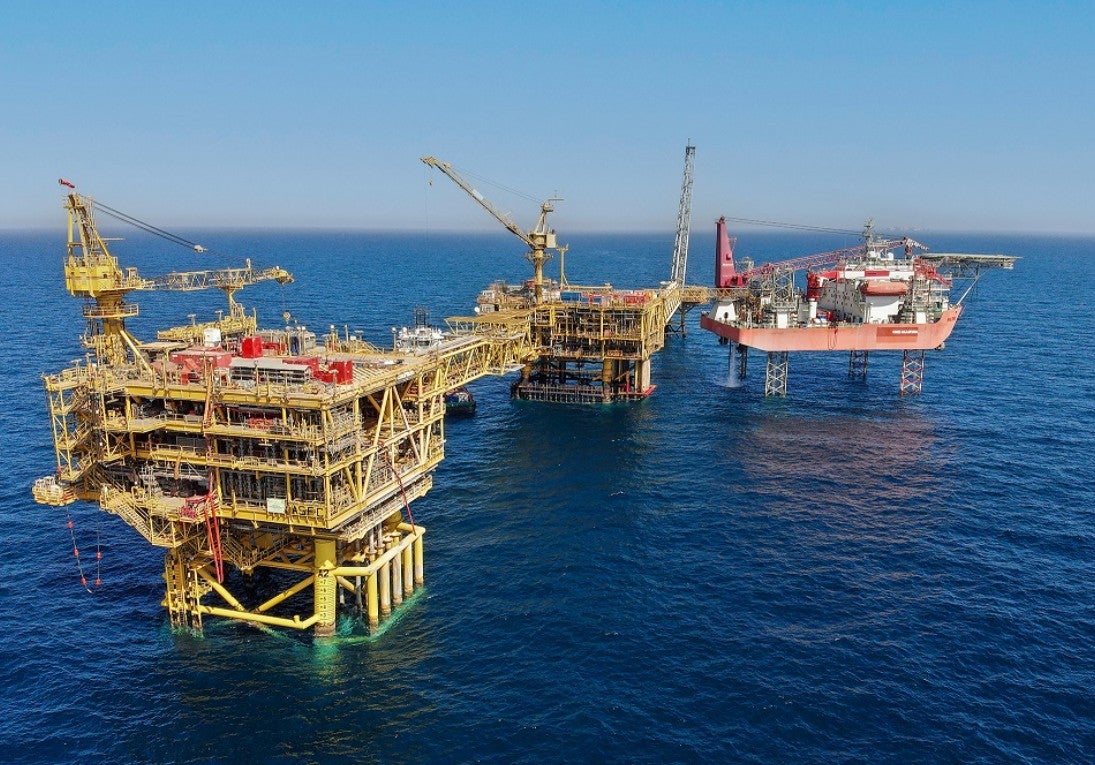 QatarEnergy LNG awards $4bn gas project package
QatarEnergy LNG awards $4bn gas project package22 December 2025
All of this is only 1% of what MEED.com has to offer
Subscribe now and unlock all the 153,671 articles on MEED.com
- All the latest news, data, and market intelligence across MENA at your fingerprints
- First-hand updates and inside information on projects, clients and competitors that matter to you
- 20 years' archive of information, data, and news for you to access at your convenience
- Strategize to succeed and minimise risks with timely analysis of current and future market trends

Related Articles
-
 Oman’s growth forecast points upwards
Oman’s growth forecast points upwards24 December 2025

MEED’s January 2026 report on Oman includes:
> COMMENT: Oman steadies growth with strategic restraint
> GVT & ECONOMY: Oman pursues diversification amid regional concerns
> BANKING: Oman banks feel impact of stronger economy
> OIL & GAS: LNG goals galvanise Oman’s oil and gas sector
> POWER & WATER: Oman prepares for a wave of IPP awards
> CONSTRUCTION: Momentum builds in construction sectorTo see previous issues of MEED Business Review, please click herehttps://image.digitalinsightresearch.in/uploads/NewsArticle/15306449/main.gif -
 December 2025: Data drives regional projects
December 2025: Data drives regional projects23 December 2025
Click here to download the PDF
Includes: Top inward FDI locations by project volume | Brent spot price | Construction output
MEED’s January 2026 report on Oman includes:
> COMMENT: Oman steadies growth with strategic restraint
> ECONOMY: Oman pursues diversification amid regional concerns
> BANKING: Oman banks feel impact of stronger economy
> OIL & GAS: LNG goals galvanise Oman’s oil and gas sector
> POWER & WATER: Oman prepares for a wave of IPP awards
> CONSTRUCTION: Momentum builds in construction sectorTo see previous issues of MEED Business Review, please click herehttps://image.digitalinsightresearch.in/uploads/NewsArticle/15306140/main.gif -
 Local firm bids lowest for Kuwait substation deal
Local firm bids lowest for Kuwait substation deal22 December 2025
The local Al-Ahleia Switchgear Company has submitted the lowest price of KD33.9m ($110.3m) for a contract to build a 400/132/11 kV substation at the South Surra township for Kuwait’s Public Authority for Housing Welfare (PAHW).
The bid was marginally lower than the two other offers of KD35.1m and KD35.5m submitted respectively by Saudi Arabia’s National Contracting Company (NCC) and India’s Larsen & Toubro.
PAHW is expected to take about three months to evaluate the prices before selecting the successful contractor.
The project is one of several transmission and distribution projects either out to bid or recently awarded by Kuwait’s main affordable housing client.
This year alone, it has awarded two contracts worth more than $100m for cable works at its 1Z, 2Z, 3Z and 4Z 400kV substations at Al-Istiqlal City, and two deals totalling just under $280m for the construction of seven 132/11kV substations in the same township.
Most recently, it has tendered two contracts to build seven 132/11kV main substations at its affordable housing project, west of Kuwait City. The bid deadline for the two deals covering the MS-01 through to MS-08 substations is 8 January.
https://image.digitalinsightresearch.in/uploads/NewsArticle/15305745/main.gif -
 Saudi-Dutch JV awards ‘supercentre’ metals reclamation project
Saudi-Dutch JV awards ‘supercentre’ metals reclamation project22 December 2025
The local Advanced Circular Materials Company (ACMC), a joint venture of the Netherlands-based Shell & AMG Recycling BV (SARBV) and local firm United Company for Industry (UCI), has awarded the engineering, procurement and construction (EPC) contract for the first phase of its $500m-plus metals reclamation complex in Jubail.
The contract, estimated to be worth in excess of $200m, was won by China TianChen Engineering Corporation (TCC), a subsidiary of China National Chemical Engineering Company (CNCEC), following the issue of the tender in July 2024.
Under the terms of the deal, TCC will process gasification ash generated at Saudi Aramco’s Jizan refining complex on the Red Sea coast to produce battery-grade vanadium oxide and vanadium electrolyte for vanadium redox flow batteries. AMG will provide the licensed technology required for the production process.
The works are the first of four planned phases at the catalyst and gasification ash recycling ‘Supercentre’, which is located at the PlasChem Park in Jubail Industrial City 2 alongside the Sadara integrated refining and petrochemical complex.
Phase 2 will expand the facility to process spent catalysts from heavy oil upgrading facilities to produce ferrovanadium for the steel industry and/or additional battery-grade vanadium oxide.
Phase 3 involves installing a manufacturing facility for residue-upgrading catalysts.
In the fourth phase, a vanadium electrolyte production plant will be developed.
The developers expect a total reduction of 3.6 million metric tonnes of carbon dioxide emissions a year when the four phases of the project are commissioned.
SARBV first announced its intention to build a metal reclamation and catalyst manufacturing facility in Saudi Arabia in November 2019. The kingdom’s Ministry of Investment, then known as the Saudi Arabian General Investment Authority (Sagia), supported the project.
In July 2022, SARBV and UCI signed the agreement to formalise their joint venture and build the proposed facility.
The project has received support from Saudi Aramco’s Namaat industrial investment programme. Aramco, at the time, also signed an agreement with the joint venture to offtake vanadium-bearing gasification ash from its Jizan refining complex.
Photo credit: SARBV
https://image.digitalinsightresearch.in/uploads/NewsArticle/15305326/main.gif -
 QatarEnergy LNG awards $4bn gas project package
QatarEnergy LNG awards $4bn gas project package22 December 2025
QatarEnergy LNG, a subsidiary of state-owned QatarEnergy, has awarded the main engineering, procurement, construction and installation (EPCI) contract for a major package for the second phase of its North Field Production Sustainability (NFPS) project.A consortium comprising the Italian contractor Saipem and state-owned China Offshore Oil Engineering Company (COOEC) has secured the EPCI contract for the COMP5 package. The contract value is $4bn, with Saipem declaring its share to be worth $3.1bn.
Milan-headquartered Saipem said the contract will run for about five years. The scope of work comprises engineering, procurement, fabrication and installation of two compression complexes, each including a compression platform, a living quarters platform, a flare platform supporting the gas combustion system, and the related interconnecting bridges. Each complex will have a total weight of about 68,000 tonnes.
Offshore installation operations will be carried out by Saipem’s De He construction vessel in 2029 and 2030.
MEED previously reported that the following contractors submitted bids for the NFPS phase two COMP5 package:
- Larsen & Toubro Energy Hydrocarbon (India)
- McDermott (US)
- Saipem/China Offshore Oil Engineering Company (Italy/China)
QatarEnergy LNG, formerly Qatargas, is said to have issued the tender for the NFPS phase two COMP5 package in the first quarter of the year.
Contractors submitted technical bids for the COMP5 package in late June, while commercial bids were submitted by 8 October, as per sources.
Based upon initial evaluation of bids by QatarEnergy LNG, L&TEH has emerged as the lowest bidder for the COMP5 package, followed by McDermott, with the consortium of Saipem and COOEC in third place, MEED reported in late October.
In the weeks following that, the project operator is said to have engaged all bidders for a final round of negotiations, during which the consortium of Saipem and COOEC is believed to have “clinched the deal”, according to sources.
The detailed scope of work on the COMP5 package covers the EPCI work on the following:
- Two gas compression platforms, each weighing 30,000-35,000 tonnes, plus jacket
- Two living quarters platforms, plus jacket
- Two gas flare platforms, plus jacket
- Brownfield modification work at two complexes
NFPS scheme
QatarEnergy’s North Field liquefied natural gas (LNG) expansion programme requires the state enterprise to pump large volumes of gas from the North Field offshore reserve to feed the three phases of the estimated $40bn-plus programme.
QatarEnergy has already invested billions of dollars in engineering, procurement and construction works on the two phases of the NFPS project, which aims to maintain steady gas feedstock for the North Field LNG expansion phases.
The second NFPS phase will mainly involve building gas compression facilities to sustain and gradually increase gas production from Qatar’s offshore North Field gas reserve over the long term.
Saipem has been the most successful contractor on the second NFPS phase, securing work worth a total of $8.5bn.
QatarEnergy LNG awarded Saipem a $4.5bn order in October 2022 to build and install gas compression facilities. The main scope of work on the package, which is known as EPCI 2, covers two large gas compression complexes that will comprise decks, jackets, topsides, interconnecting bridges, flare platforms, living quarters and interface modules.
The gas compression complexes – CP65 and CP75 – will weigh 62,000 tonnes and 63,000 tonnes, respectively, and will be the largest fixed steel jacket compression platforms ever built.
Following that, Saipem won combined packages COMP3A and COMP3B of the NFPS project’s second phase in September last year.
The scope of work on the combined packages encompasses the EPCI of a total of six platforms, approximately 100 kilometres (km) of corrosion resistance alloy rigid subsea pipelines of 28-inches and 24-inches diameter, 100km of subsea composite cables, 150km of fibre optic cables and several other subsea units.
Separately, QatarEnergy LNG awarded McDermott the contract for the NFPS second phase package known as EPCI 1, or COMP1, in July 2023. The scope of work on the estimated $1bn-plus contract is to install a subsea gas pipeline network at the North Field gas development.
In March this year, India’s Larsen & Toubro Energy Hydrocarbon (LTEH) won the main contract for the combined 4A and 4B package, which is the fourth package of the second phase of the NFPS project and is estimated to be valued at $4bn-$5bn.
The main scope of work on the package is the EPCI of two large gas compression systems that will be known as CP8S and CP4N, each weighing 25,000-35,000 tonnes. The contract scope also includes compression platforms, flare gas platforms and other associated structures.
LTHE sub-contracted detailed engineering and design works on the combined 4A and 4B package to French contractor Technip Energies.
NFPS first phase
Saipem is also executing the EPCI works on the entire first phase of the NFPS project, which consists of two main packages.
Through the first phase of the NFPS scheme, QatarEnergy LNG aims to increase the early gas field production capacity of the North Field offshore development to 110 million tonnes a year.
QatarEnergy LNG awarded Saipem the contract for the EPCI package in February 2021. The package is the larger of the two NFPS phase one packages and has a value of $1.7bn.
Saipem’s scope of work on the EPCI package encompasses building several offshore facilities for extracting and transporting natural gas, including platforms, supporting and connecting structures, subsea cables and anti-corrosion internally clad pipelines.
The scope of work also includes decommissioning a pipeline and other significant modifications to existing offshore facilities.
In addition, in April 2021, QatarEnergy LNG awarded Saipem two options for additional work within the EPCI package, worth about $350m.
QatarEnergy LNG awarded Saipem the second package of the NFPS phase one project, estimated to be worth $1bn, in March 2021.
Saipem’s scope of work on the package, which is known as EPCL, mainly covers installing three offshore export trunklines running almost 300km from their respective offshore platforms to the QatarEnergy LNG north and south plants located in Ras Laffan Industrial City.
Saipem performed the front-end engineering and design work on the main production package of the first phase of the NFPS as part of a $20m contract that it was awarded in January 2019. This provided a competitive advantage to the Italian contractor in its bid to win the package.
https://image.digitalinsightresearch.in/uploads/NewsArticle/15305330/main2239.jpg


